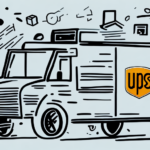Importance and Benefits of Shipping Insurance for E-commerce Businesses
Shipping products can be a risky endeavor, with damage or loss during transit being common occurrences. Implementing shipping insurance is crucial for e-commerce businesses, particularly those handling high-value products. Here are some key benefits:
Protecting Financial Interests
First-Class Package Service Insurance safeguards businesses from potential financial losses resulting from lost, damaged, or stolen packages. This protection ensures that the cost of goods and shipping fees are covered, allowing businesses to maintain their profitability even in the event of unforeseen mishaps.
Building Customer Trust and Loyalty
Offering secure shipping and insurance coverage enhances customer confidence. Shoppers are more likely to purchase from businesses that demonstrate a commitment to protecting their orders, thereby fostering trust and encouraging repeat business.
Understanding First-Class Package Service Insurance
First-Class Package Service Insurance is a shipping insurance option designed to cover the loss, damage, or theft of packages during transit. Below are the key components:
Coverage Details
This insurance typically covers the contents of the package up to a specified declared value. In case of loss or damage, businesses receive compensation based on the declared value, ensuring that they are reimbursed for the cost of both the product and shipping.
How It Works
When a package is insured under First-Class Package Service Insurance, the business declares the value of the package at the time of shipping. If an issue arises, the business can file a claim with the carrier, providing necessary documentation to receive compensation.
Liability Limits and Deductibles
Each carrier sets liability limits and deductibles for their insurance policies. It's essential to understand these terms to ensure adequate coverage. For instance, higher-value packages may require policies with higher liability limits and lower deductibles for comprehensive protection.
Comparing Shipping Insurance Options
There are various shipping insurance options available, each with distinct features and coverage levels. Here's a comparison of some popular choices:
First-Class Package Service vs. Priority Mail Insurance
- First-Class Package Service Insurance: Ideal for lightweight items, offering coverage up to $100. It is a cost-effective option but lacks additional services like signature confirmation.
- Priority Mail Insurance: Provides broader coverage up to $50,000, along with free tracking and delivery confirmation. However, it is more expensive and may be unnecessary for low-value shipments.
Other Shipping Insurance Options
- UPS Value Protect: Offers customizable coverage options and additional services like tracking and signature confirmation.
- FedEx Declared Value: Similar to UPS, it provides adjustable coverage limits and comprehensive shipping features.
- Third-Party Insurance Providers: Companies like InsureShip offer specialized shipping insurance with flexible coverage options that might better suit frequent shippers.
How to Purchase and Manage Your Shipping Insurance
Purchasing Directly from the Carrier
Businesses can acquire First-Class Package Service Insurance directly through the shipping carrier's website or at their physical locations. When purchasing, it's important to review the coverage details, terms, conditions, and premium costs to ensure the policy aligns with your business needs.
Third-Party Insurance Providers
Alternatively, businesses can opt for third-party insurance providers, which may offer more comprehensive coverage at competitive rates. These providers can be especially beneficial for businesses with high shipping volumes or those requiring specialized coverage. It's crucial to research and compare providers to select a reputable company that meets your coverage requirements.
Filing Claims for First-Class Package Service Insurance
Claim Process Steps
- Report the loss or damage to the shipping carrier within the specified timeframe, typically within 30 days.
- Provide proof of the package's value, including receipts or invoices.
- Submit evidence of the damage, such as photographs.
- Complete any required forms as per the carrier's procedures.
Required Documentation
When filing a claim, ensure that you have all necessary documentation ready. This may include the original shipping receipt, proof of insurance, photographs of the damage, and any relevant correspondence with the carrier. Accurate and complete documentation can expedite the claim process and increase the likelihood of a successful outcome.
Best Practices for Shipping and Insurance
To maximize the benefits of shipping insurance and minimize the risk of loss or damage, consider the following best practices:
- Use Sturdy Packaging Materials: Invest in high-quality boxes and packing materials to protect your products during transit.
- Double-Box Fragile Items: For delicate products, double-boxing provides additional cushioning and protection.
- Secure Packages Properly: Use strong packing tape and ensure that all seams and edges are sealed adequately.
- Label Accurately: Clearly label packages with accurate information, including handling instructions if necessary.
- Insure High-Value Items: Always insure items that hold significant value to mitigate potential financial losses.
Common Misconceptions and Risks of Not Having Shipping Insurance
Common Misconceptions
- Insurance is Too Expensive: Many businesses assume that shipping insurance is prohibitively costly, but policies like First-Class Package Service Insurance offer affordable rates.
- Insurance Doesn't Offer Comprehensive Coverage: Contrary to belief, many insurance policies provide extensive coverage for loss, damage, or theft during transit.
Risks of Not Having Shipping Insurance
Opting out of shipping insurance can expose businesses to several risks, including:
- Financial Losses: Without insurance, businesses must absorb the costs of lost or damaged shipments.
- Reputation Damage: Frequent shipment issues can erode customer trust and deter repeat business.
- Legal Complications: Disputes with customers over lost or damaged packages may result in legal fees and negative publicity.






















